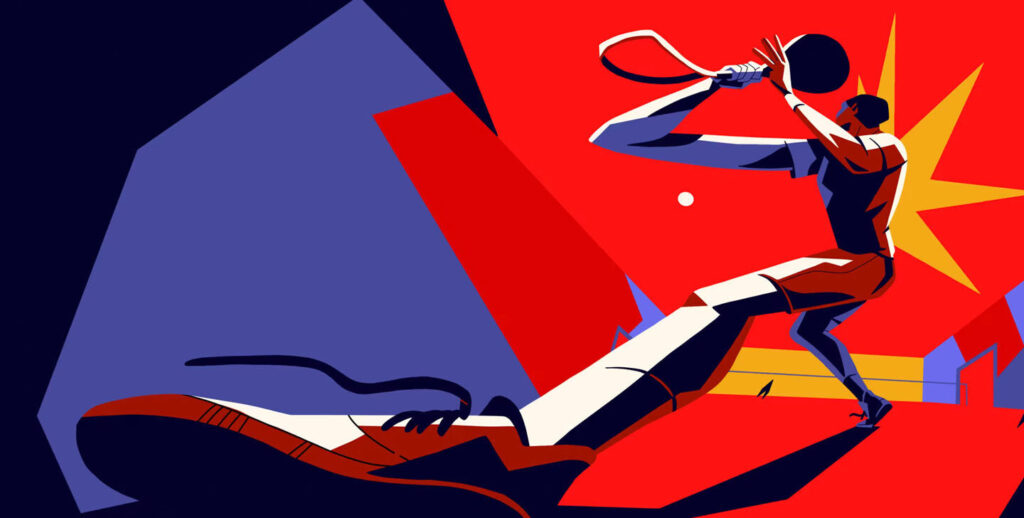By Garbanzo– Motion Graphics and Animation Studio
Why Visual Storytelling is Essential in Modern Branding
In an era where consumers are bombarded with content from every direction, brands need more than just eye-catching graphics—they need stories that captivate, engage, and inspire. This is where dynamic visual storytelling comes into play.
Motion design, a blend of animation, visual effects, and storytelling, has become a game-changer in brand marketing. It allows brands to create compelling narratives that emotionally connect with audiences, making information easier to digest and more memorable.
But here’s the problem…
Many businesses struggle to integrate visual storytelling into their marketing strategy effectively. They either:
- Use static visuals that fail to engage.
- Rely on text-heavy content that audiences ignore.
- Lack the expertise to create motion-based narratives.
This blog will explore why motion design is the key to dynamic visual storytelling, how brands can use it effectively, and the impact it has on audience engagement and brand perception.

The Shift Toward Motion-Based Storytelling in Branding
1. Static Content No Longer Captivates Audiences
The way people consume content has changed dramatically. Text-based content and static images no longer have the same impact they once did.
- 80% of consumers prefer video over text-based content.
- Visual stories are processed 60,000 times faster than text.
- Motion graphics increase user engagement by 300%.
Motion design isn’t just about making content visually appealing—it’s about delivering information in a way that sticks. Leading brands and major animation studios use motion-based content to engage audiences effectively.
2. Motion Design Enhances Brand Recognition
A strong brand identity isn’t just about having a logo and color scheme—it’s about creating a consistent visual experience. Motion design can:
- Make brand elements more dynamic (animated logos, smooth transitions).
- Create a unique visual language that makes brands instantly recognizable.
- Help brands stand out in crowded digital spaces.
Example: Google’s Doodles use animated storytelling to engage users and enhance brand identity. Similarly, major animation studios like Disney and Pixar use motion-driven storytelling to maintain consistent brand perception and captivate global audiences.
3. Visual Storytelling Increases Emotional Connection
People remember stories, not just facts. Motion design transforms abstract ideas into compelling narratives, making them easier to understand and relate to.
Example: A nonprofit organization raising awareness about climate change could use motion design to visualize rising sea levels, evoking emotion and encouraging action.
Why it works: Emotionally-driven content generates higher engagement, more shares, and increased brand loyalty.
How Motion Design is Revolutionizing Digital Marketing
1. Motion Graphics in Social Media Marketing
Social media platforms prioritize video content over static images, making motion design essential for brands that want to stand out.
Best Motion Graphics for Social Media:
- Animated Infographics – Make complex data engaging.
- Story-Based Motion Graphics – Create mini brand narratives.
- Cinematic Advertisements – High-impact ads that boost engagement.
Example: Spotify Wrapped’s annual motion graphic campaign creates a viral trend every year, leveraging visual storytelling to engage users.
2. Explainer Videos That Simplify Complex Ideas
Motion design is perfect for explaining products, services, or abstract concepts in a clear, engaging, and visually appealing way.
- Animated explainer videos improve retention rates by 90%.
- Short-form animated content is more digestible than long-form text.
- Engaging animations boost brand credibility and trust.
Example: Dropbox’s explainer video campaign helped increase conversions by 10% simply by using animation to break down their product’s functionality.
3. Interactive Motion Content for Websites
A static website feels outdated. Adding motion elements enhances user experience, keeping visitors engaged longer.
- Micro-interactions (hover effects, scrolling animations)
- Cinematic homepage videos
- Smooth UI/UX animations
Example: Apple’s website uses smooth transitions, animated product showcases, and engaging micro-interactions to keep users visually engaged.
4. Motion-Driven Advertisements and Digital Campaigns
Digital advertising is shifting toward motion-based content because:
- Motion ads outperform static ads by 400%.
- Consumers are 2X more likely to engage with video-based ads.
- Motion ads boost brand recall by 70%.
How to Use Motion Design to Enhance Brand Storytelling
Step 1: Define Your Brand’s Core Message
Before incorporating motion design, determine:
- What story are you trying to tell?
- What emotions do you want to evoke?
- Who is your target audience?
Step 2: Choose the Right Motion Design Style
Different motion design styles work for different purposes:
- 2D Animation – Great for explainer videos and branding.
- 3D Motion Graphics – High-end visuals for luxury brands.
- Kinetic Typography – Emphasizing key messaging through animated text.
- Stop Motion – A unique storytelling format that adds creativity.
Step 3: Keep It Simple and Focus on the Story
Motion design should enhance the story, not distract from it.
- Avoid overloading content with excessive effects.
- Keep animations smooth and aligned with your brand identity.
- Use seamless transitions to guide the viewer’s journey.
Step 4: Optimize for Multi-Platform Distribution
Each platform has different motion design requirements:
- Instagram, TikTok – Short, attention-grabbing animations (15–30 sec).
- YouTube, Websites – Longer, storytelling-based motion graphics.
- Email Marketing – Subtle animated elements for engagement.

Why Brands Should Invest in Motion Design for Visual Storytelling
Motion design is no longer optional—it’s an essential tool for modern brand storytelling. The biggest animation studios such as Disney, Pixar, and DreamWorks consistently use dynamic visuals to craft unforgettable narratives. This approach has not only elevated their brand identities but also set a high standard for visual storytelling across industries.
- Boosts audience engagement and retention.
- Enhances brand credibility and recognition.
- Makes complex information easier to understand.
- Increases digital campaign success rates.
Conclusion: Elevating Your Brand with Dynamic Visual Storytelling
Dynamic visual storytelling through motion design has emerged as a vital tool for brands looking to cut through the noise and connect with modern audiences. It’s more than just eye-catching visuals—it’s about creating immersive, emotionally engaging experiences that leave a lasting impression. From enhancing brand recognition to simplifying complex ideas and boosting user engagement, motion design brings stories to life in ways static content simply can’t match.
As consumer preferences continue to evolve, brands that embrace motion-based storytelling will stand out, build deeper relationships, and drive stronger results. By making motion design a core part of your marketing strategy, you’re not just keeping up with the times—you’re setting the stage for your brand’s next big leap forward.
If you’re looking to elevate your brand through motion-driven storytelling, now is the time to start.



